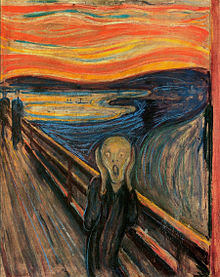Squint, furrow your brow, or purse your lips … and you may be contributing to the headache you’ll get later in the day.
Tension-type headaches are the most common form of headache, according to the International Headache Society. You may blame stress, bad posture or a poor night’s sleep, reaching for a painkiller to get you through the day. But you don’t need pain pills to fight tension headaches — just stretch your face!
One of the hallmark symptoms of a tension-type headache is a feeling of tightness or pressure across the forehead and along the sides or back of the head. It’s like you’ve got a vise-grip on your head, but this vise-grip has internal roots in how you’re using your muscles.
You may not realize the amount of time you spend clenching your facial muscles. Squinting into a computer screen pulls in the muscles around your eyes, but also engages your forehead and upper jaw. You may be gritting your teeth while you concentrate, holding your jaw at a weird angle to talk on the phone for hours, forcing a smile for hours, or doing any number of “minor” facial tics that add up to big pain over time.
Fight that pain with facial stretches! They’re not in anyone’s regular routine, but this kind of progressive muscle relaxation can make a big difference in the frequency, intensity, and length of your tension-type headaches according to the Mayo Clinic. To get started, here are five simple moves to loosen up your major facial muscles:
1. Yawn Stretch
A yawn stretch looks a lot like a real yawn, but instead of hiding it your goal is to open your mouth as wide as possible. Hold for a slow count of five, relax, and repeat three to five times. Yes, you may look like Edvard Munch’s The Scream, but you are also engaging your lateral pterygoid, suprahyoid, infrahyoid, temporalis, masseter, and medial pterygoid muscles.
Located on both sides of your face, these muscles are responsible for helping you open and close your mouth. The temporalis is the one you may have heard of before, as this large, fan shaped muscle goes all the way up into your forehead, and tension here can contribute to temporomandibular joint pain (TMJ). Stretching these muscles can relieve headaches caused by jaw clenching, tooth grinding or intense gum chewing.
2. Eyebrow Raise
An eyebrow raise stretch requires you to shoot your eyebrows toward the sky — and then hold them there for a slow count of five. Relax and repeat three to five times.
This stretch engages the frontalis muscle, which lays over your forehead from your hairline to your eyebrows. This muscle controls the transverse wrinkles that form in your forehead when you frown or fall into intense concentration. Raising your eyebrows stretches them out of their clenched, tightened position to relieve stress and pain.
3. Squint-N-Shock
The Squint-N-Shock stretch has two parts. First, squint your eyes for all you’re worth for a slow count of five. Next, reverse the motion by opening your eyes in shock as wide as they will go for a five-count. Relax, and then repeat three to five times.
This stretch targets the orbicularis muscles, which help you squint and focus. If you’ve been staring at the same page or computer screen all day and have developed a frontal tension headache, this stretch can reduce your tension and pain.
4. Clock Trace
The Clock Trace is a stretch led by your nose. It targets the muscles that frame your face and connect your face to your neck. You’ll want to lay down for this to be most effective, though you can also do it sitting at a desk.
Square your shoulders and look straight ahead, as though you were staring at a distant clock. Imagine your nose is the second hand on a Rolex, and make a slow, smooth sweep of the clock dial starting at 12 o’clock. Do five slow clockwise circles and then reverse to a counter-clockwise motion.
Focus on keeping the movement in your face and not letting your neck take over the action. This stretch can fight phone-face tension and tension caused by angling your face all day to rest on a hand or look down at a computer screen.
5. Jaw Wiggle
The last stretch returns to the jaw muscles. Now that the rest of your face has loosened up, it’s time to revisit the major side-to-side tension causers in your jaw.
Relax your face and let your jaw hang open. Cheek muscles should be slack, and if you’re worried about drooling you’ve got the right position and attitude. Slowly, using only your lower jaw, point to the left. Hold for a few seconds, and then gently swing to the right. Hold, relax, and then repeat three to five times.
Don’t get aggressive here, since you don’t want to strain your jaw or dislocate a loose jawbone. Instead, gently wiggle back and forth in a cross-bite pattern that would horrify your dentist. This loosens up the neck connectors as well as the powerful jaw muscles.
Tension headaches may be common, but you don’t have to let them be a regular part of your life. Stop your pain by taking a few minutes to stretch your face. Forget about how it might look and just enjoy how it feels to stretch away your tension and tell your tension headaches good-bye for good.
This article first appeared in our monthly print newsletter, Live Pain Free®.
Enjoy a free 30-day preview membership and get a free copy of our 2-CD set The Complete Healing Formula for Back Pain (a $79 value) just for taking a look.



